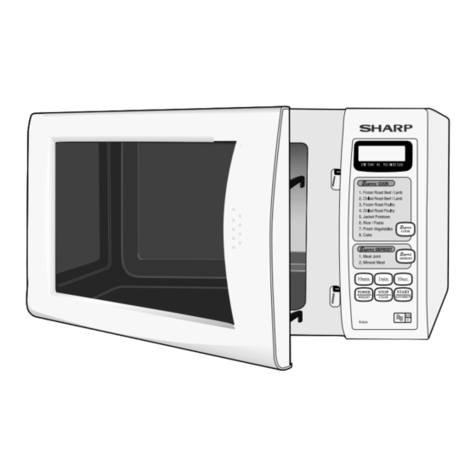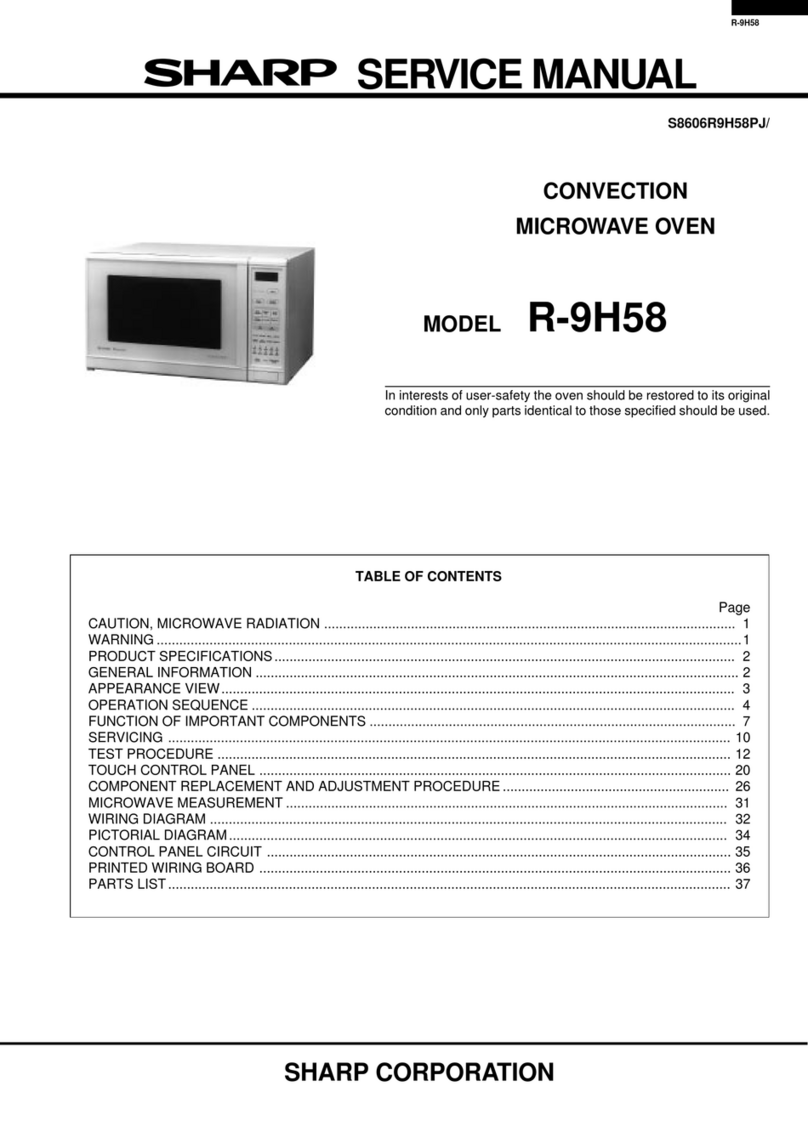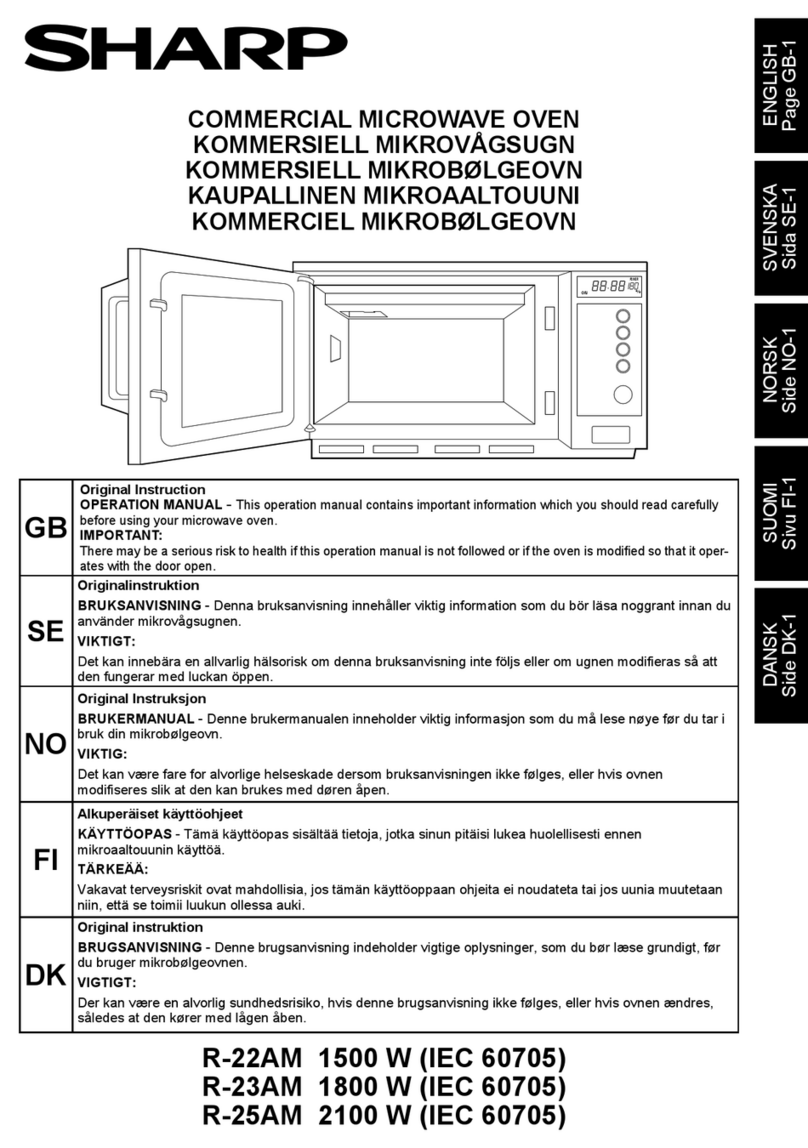Sharp R-9570 User manual
Other Sharp Microwave Oven manuals

Sharp
Sharp R-34DM User manual
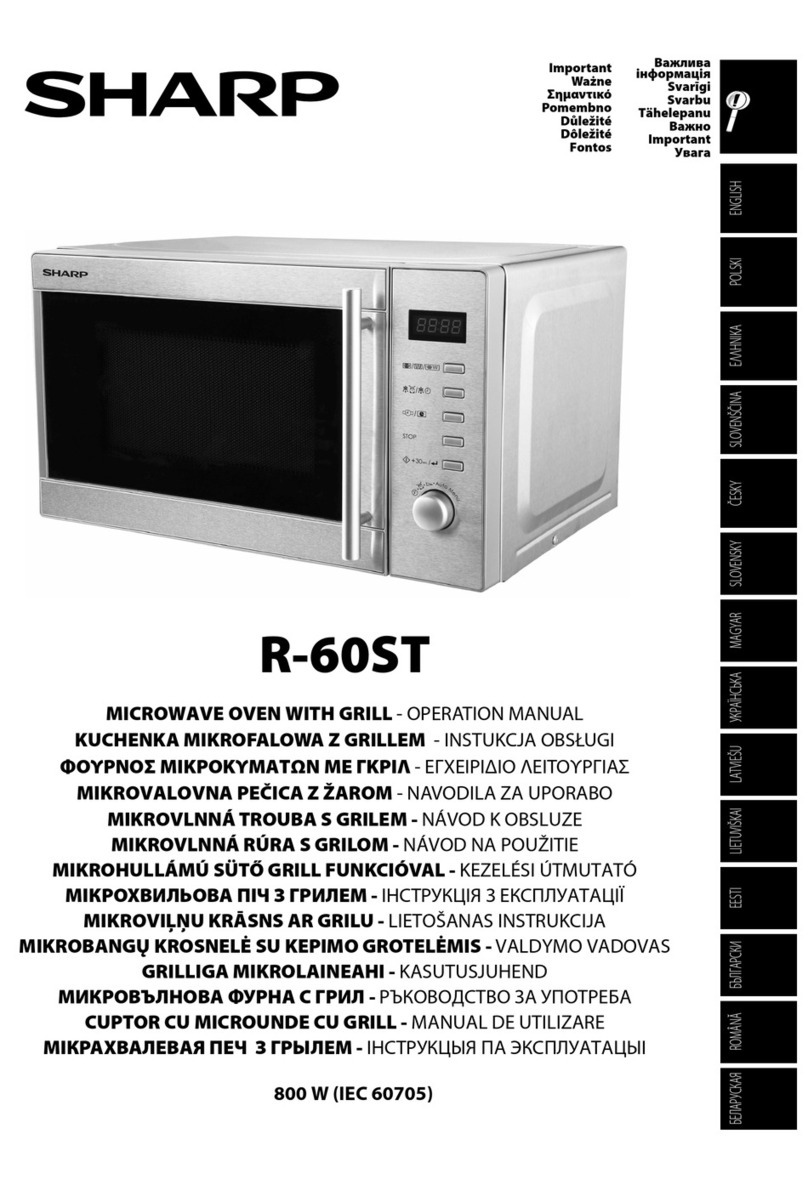
Sharp
Sharp R-60ST User manual
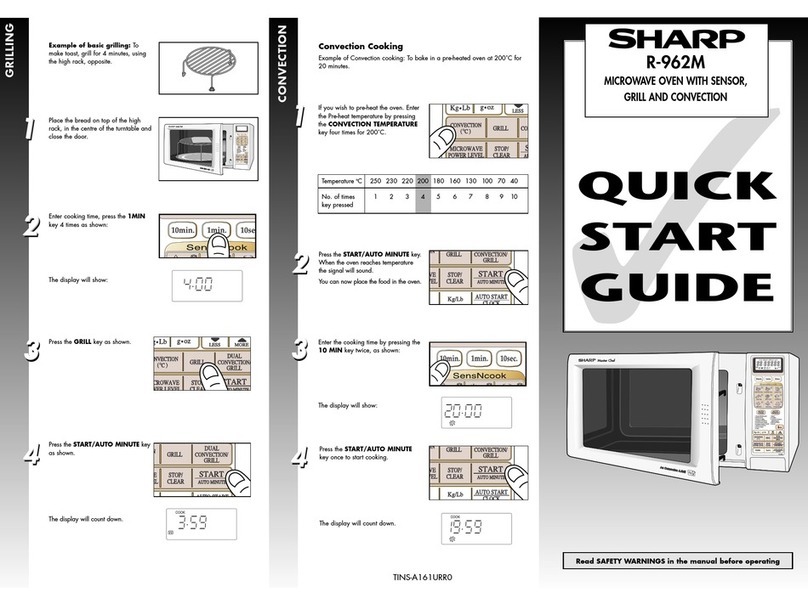
Sharp
Sharp R-962M User manual
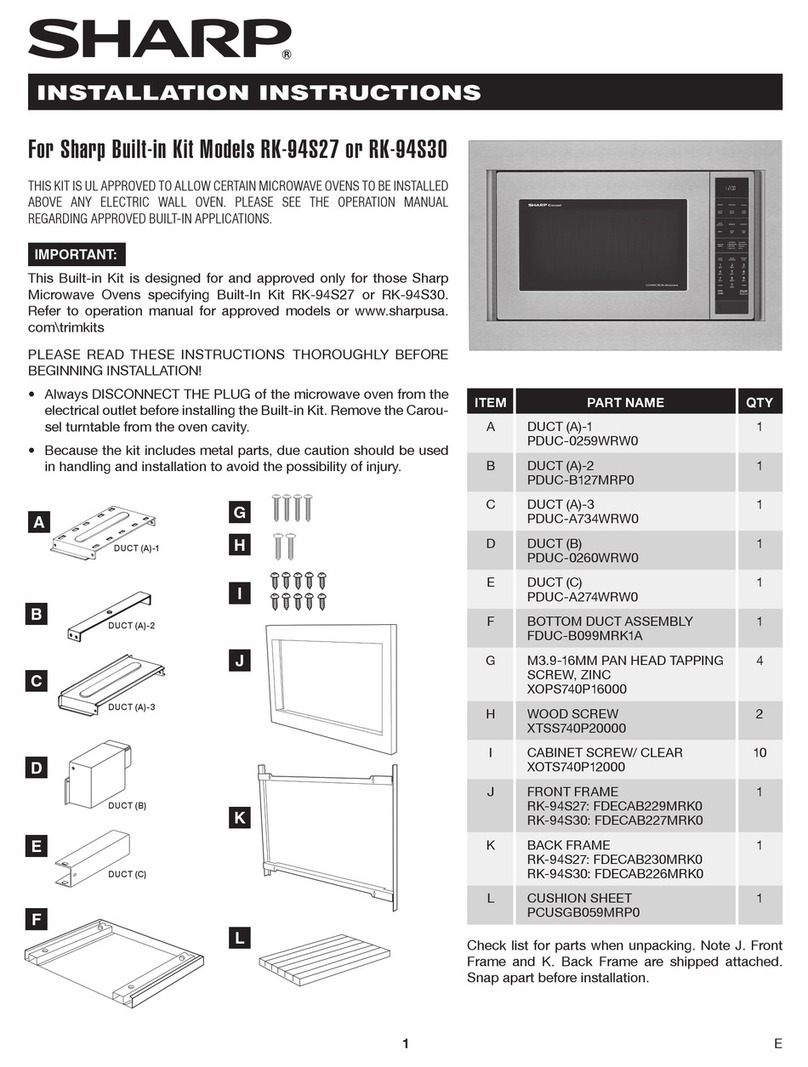
Sharp
Sharp RK-94S27 User manual

Sharp
Sharp R-402FW User manual

Sharp
Sharp R-950A User manual
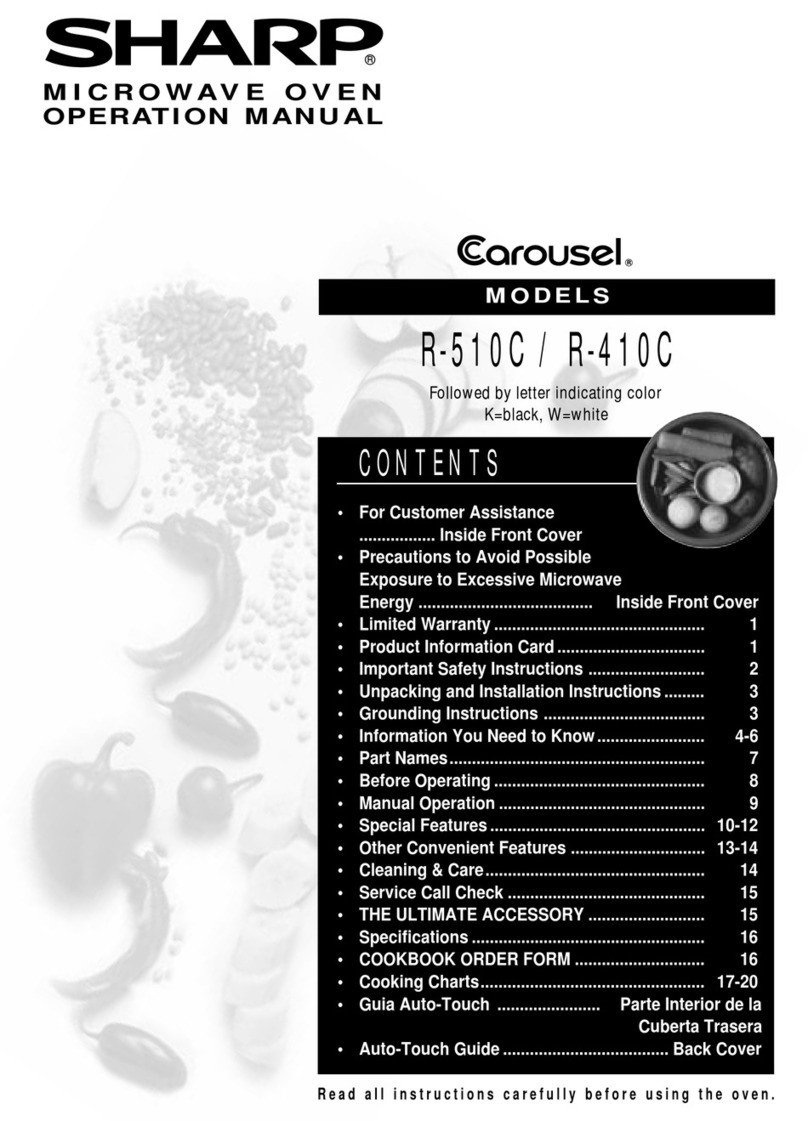
Sharp
Sharp Carousel R-510C User manual

Sharp
Sharp Steamwave AX1100J User manual

Sharp
Sharp KM-2002B User manual

Sharp
Sharp KB6021MW - 24 Insight Pro Microwave Drawer Assembly instructions
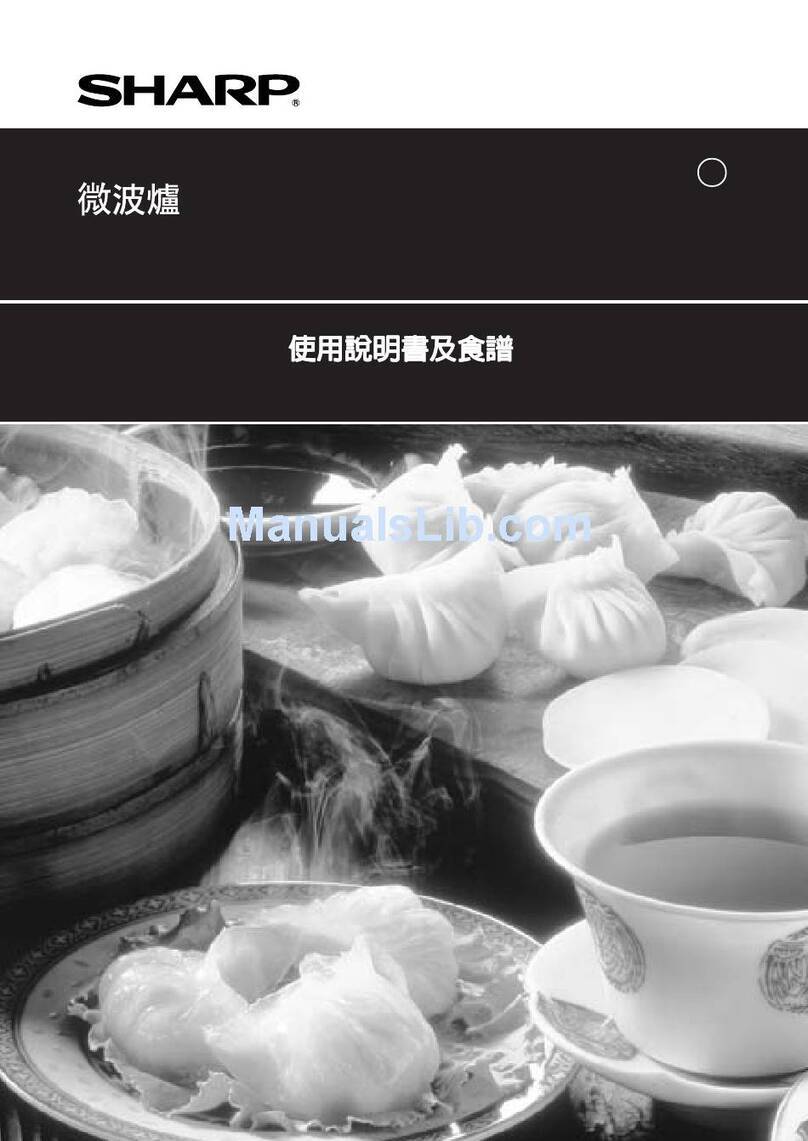
Sharp
Sharp R-248J Technical specifications

Sharp
Sharp AX-1110IN Instruction Manual
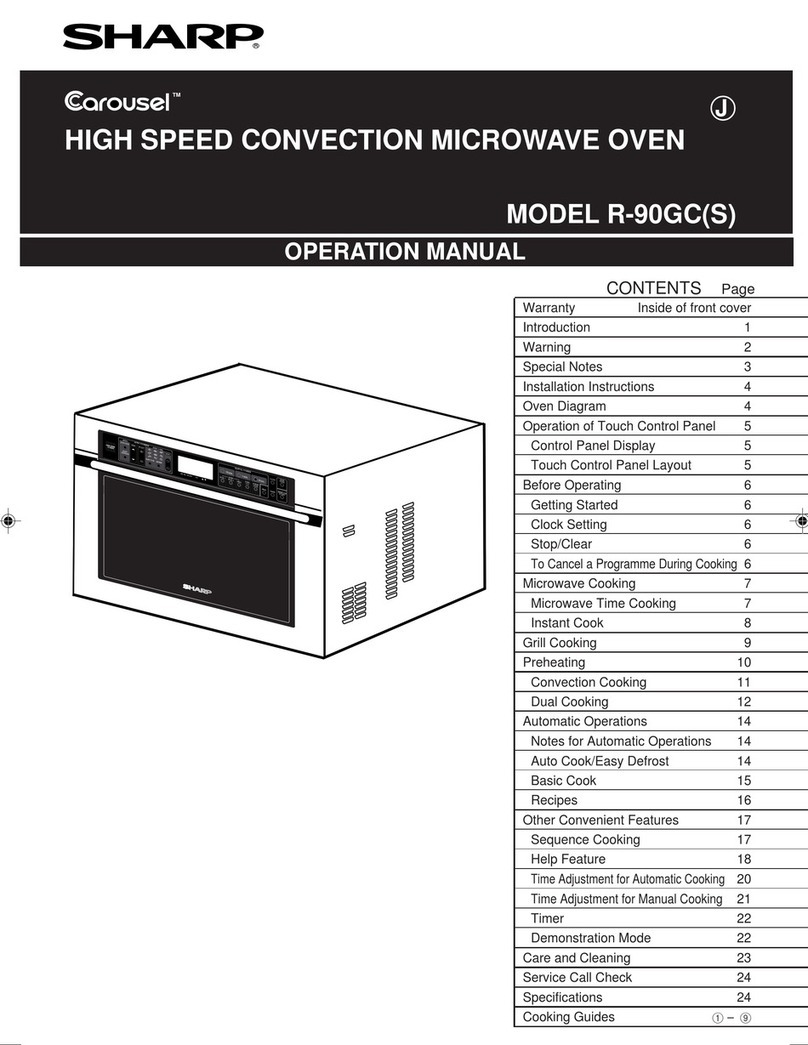
Sharp
Sharp Carousel R-90GCS User manual

Sharp
Sharp R-380VS User manual
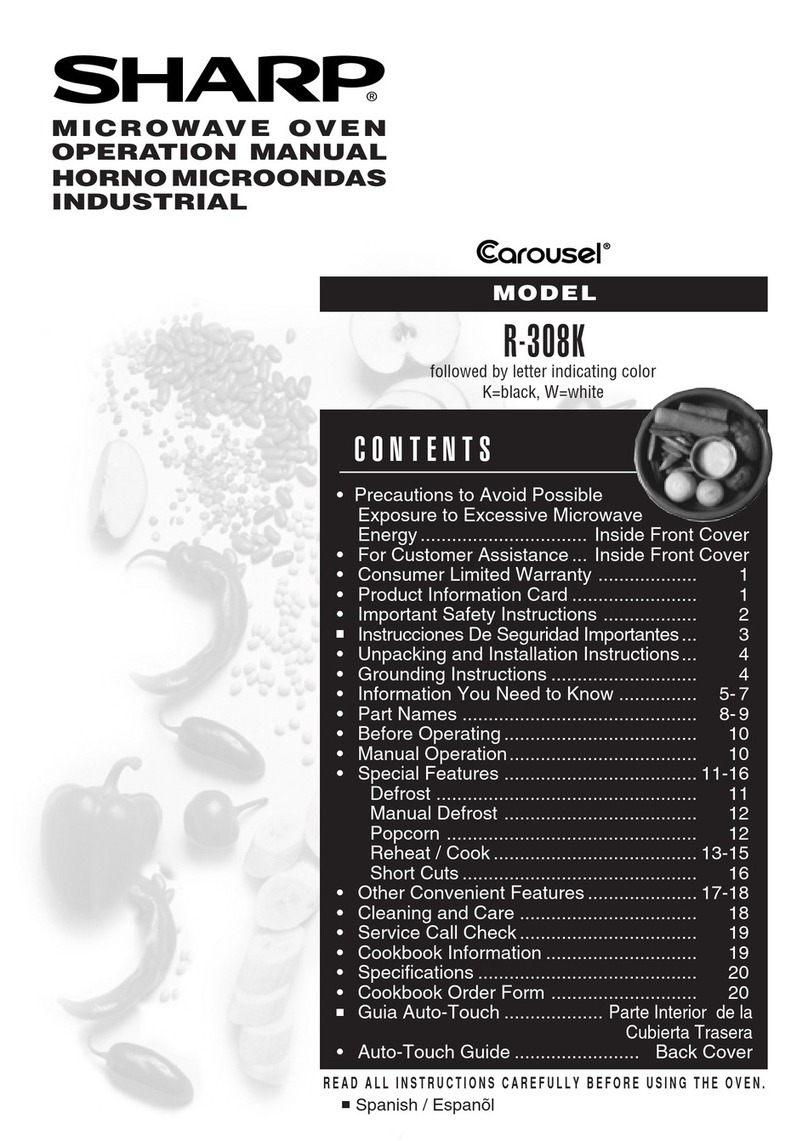
Sharp
Sharp Carousel R-308K User manual

Sharp
Sharp YC-QS204A User manual
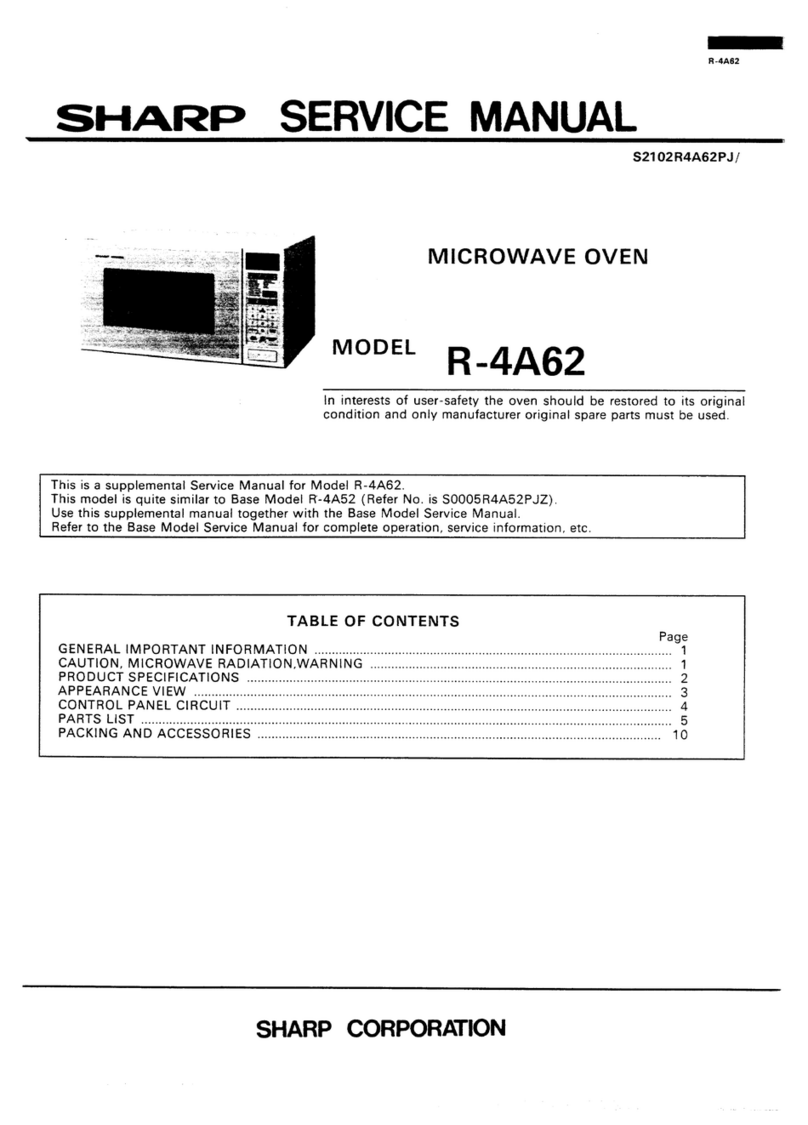
Sharp
Sharp R-4A62 User manual
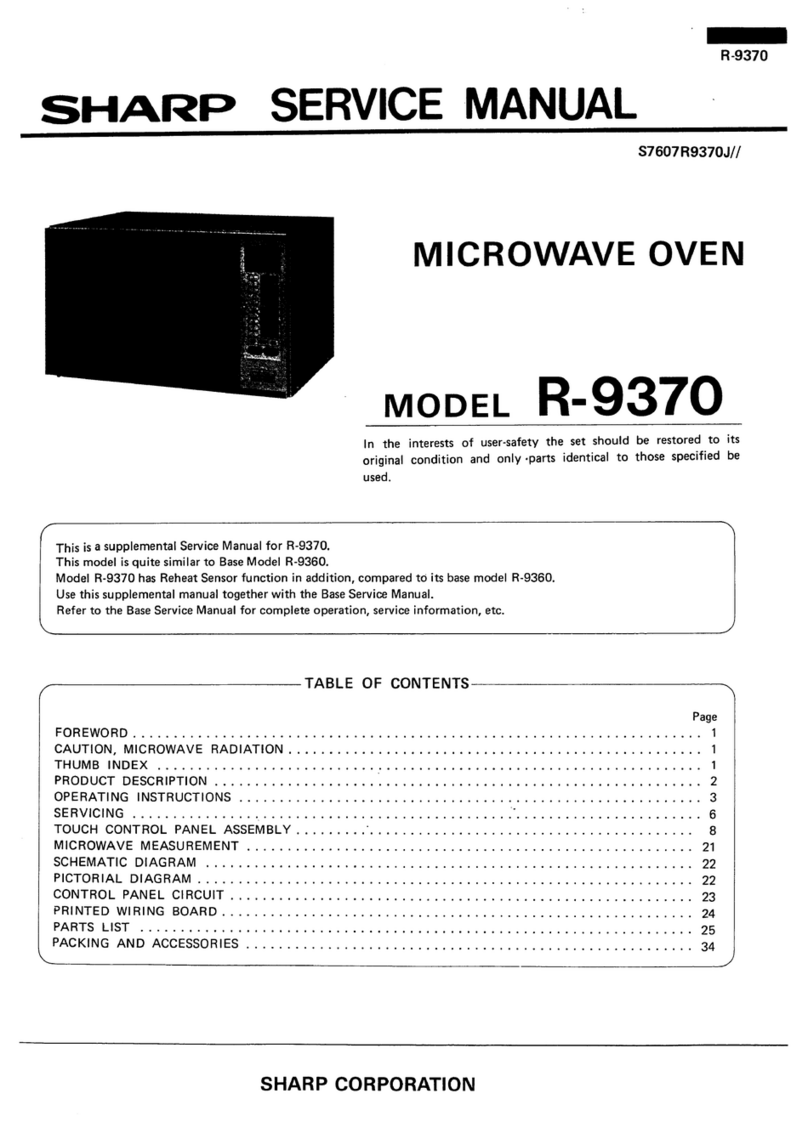
Sharp
Sharp R-9370 User manual

Sharp
Sharp R-551ZS User manual
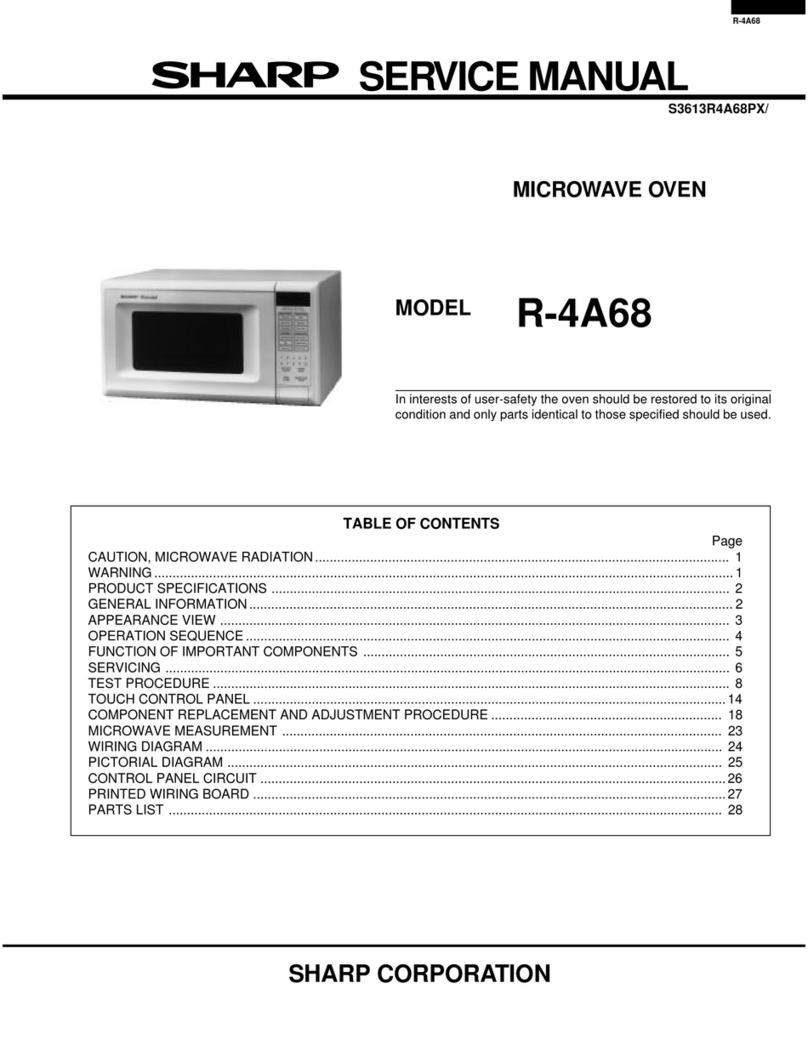
Sharp
Sharp R-4A68 User manual
Popular Microwave Oven manuals by other brands

GE
GE Spacemaker JVM1440BH datasheet

DAEWOO ELECTRONICS
DAEWOO ELECTRONICS KOR-6L8K5S83 Operating instructions & cook book

DAEWOO ELECTRONICS
DAEWOO ELECTRONICS KOR-1N5A9S Operating instructions & cook book

Daewoo
Daewoo KQG-6617G Operating instructions & cook book

Samsung
Samsung M1779 Owner's instructions

GE
GE JES1143 Use and care & cooking guide

Miele
Miele H6200BM(TB) Operating and installation instructions

Jocel
Jocel JMO011480 instruction manual

Electrolux
Electrolux EVL8E00X user manual

STOVES
STOVES Q900GRF DO User, installation & servicing instructions

Daewoo
Daewoo KOR-6L0B3S Operating instructions & cook book

KitchenAid
KitchenAid KCMS1555 Use and care guide
